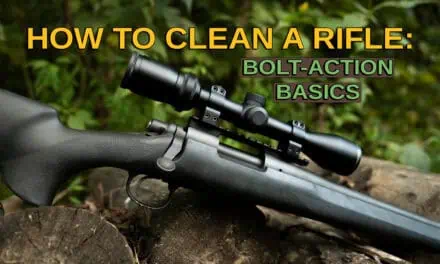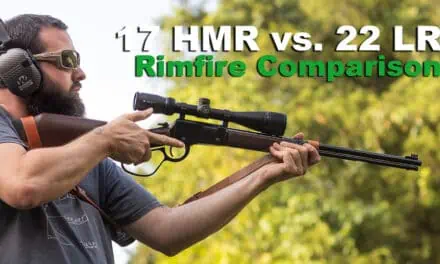Hunting hogs at night involves a multitude of skills and equipment in order to be successful. Today, let’s cover some of the basic night vision gear and equipment you will need in order to start planning your next hunting excursion.
Article Guide
- Gear for Hunting Hogs at Night
- Weapon Systems and Accessories
- Other Helpful Items
- Hunting Hogs with Night Vision
Watch Kenneth show off some of the gear in the video below!
Gear for Hunting Hogs at Night
Night Vision Units
There are a lot of different options when it comes to night vision units. Let’s talk about the most common night vision set up for hunting hogs.
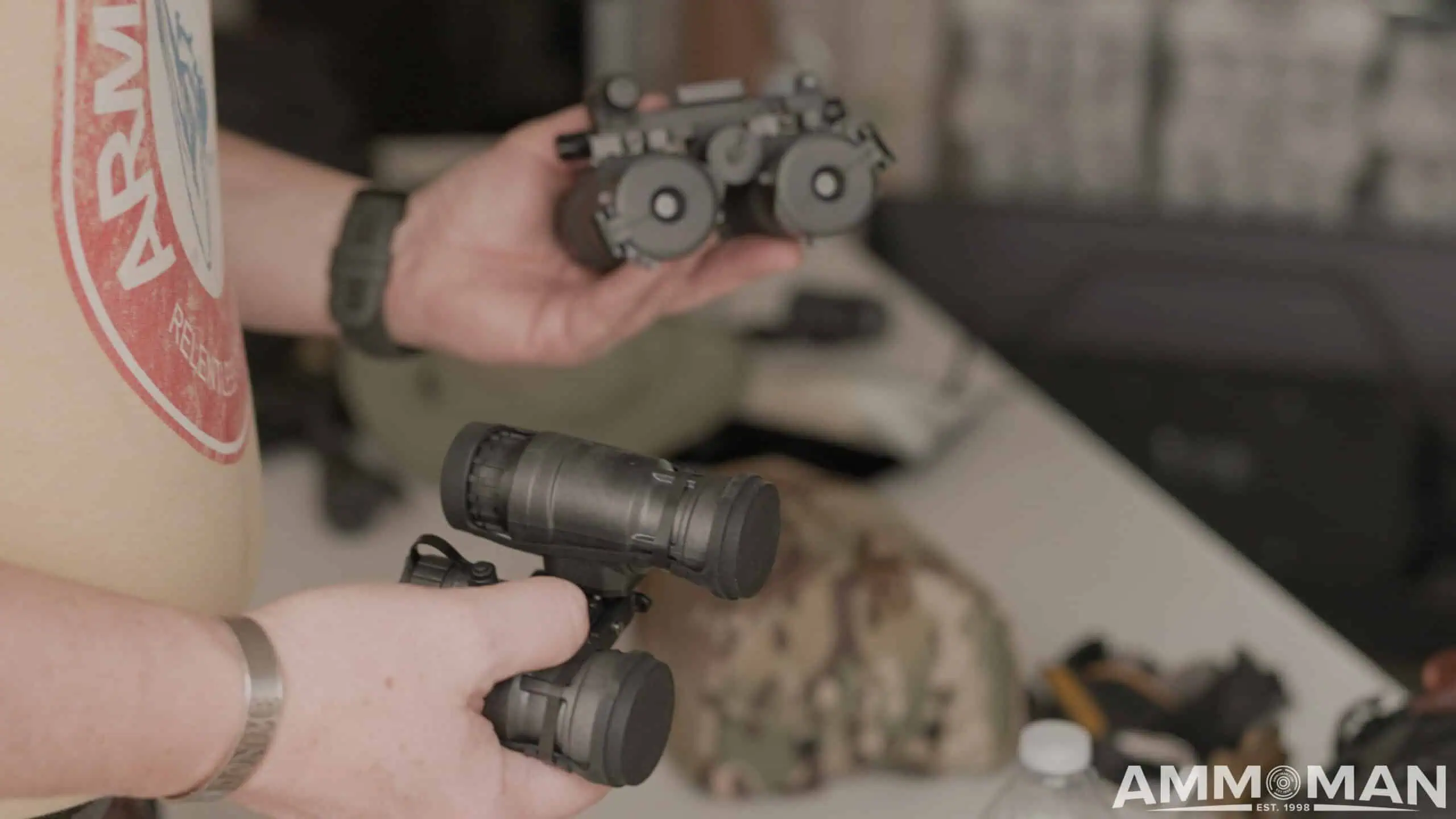
There are many types of night vision units.
Monocular vs. Binocular Night Vision
Dual tube or single tube night vision units come in a variety of configurations. Green phosphate or white phosphate tubes are available on the civilian market and can be purchased from budget quality to high end units. Along with the actual night vision tubes, you will need to figure out which “housing” (basically just a shell for the tube) best suits your needs. Whichever housing you select will effect the ways you are able to articulate the night vision, as well as which functions or features they have.
I have experience using primarily the AB MOD-3 dual tube night vision. I have also played with the L3 Harris PVS-31’s as well. Each housing has its upsides and trade-offs. The MOD’s do not have the ability to articulate like the PVS-31’s but they do have the benefit of breaking down into individual PVS-14’s that can be used independently.
Helmet Setup
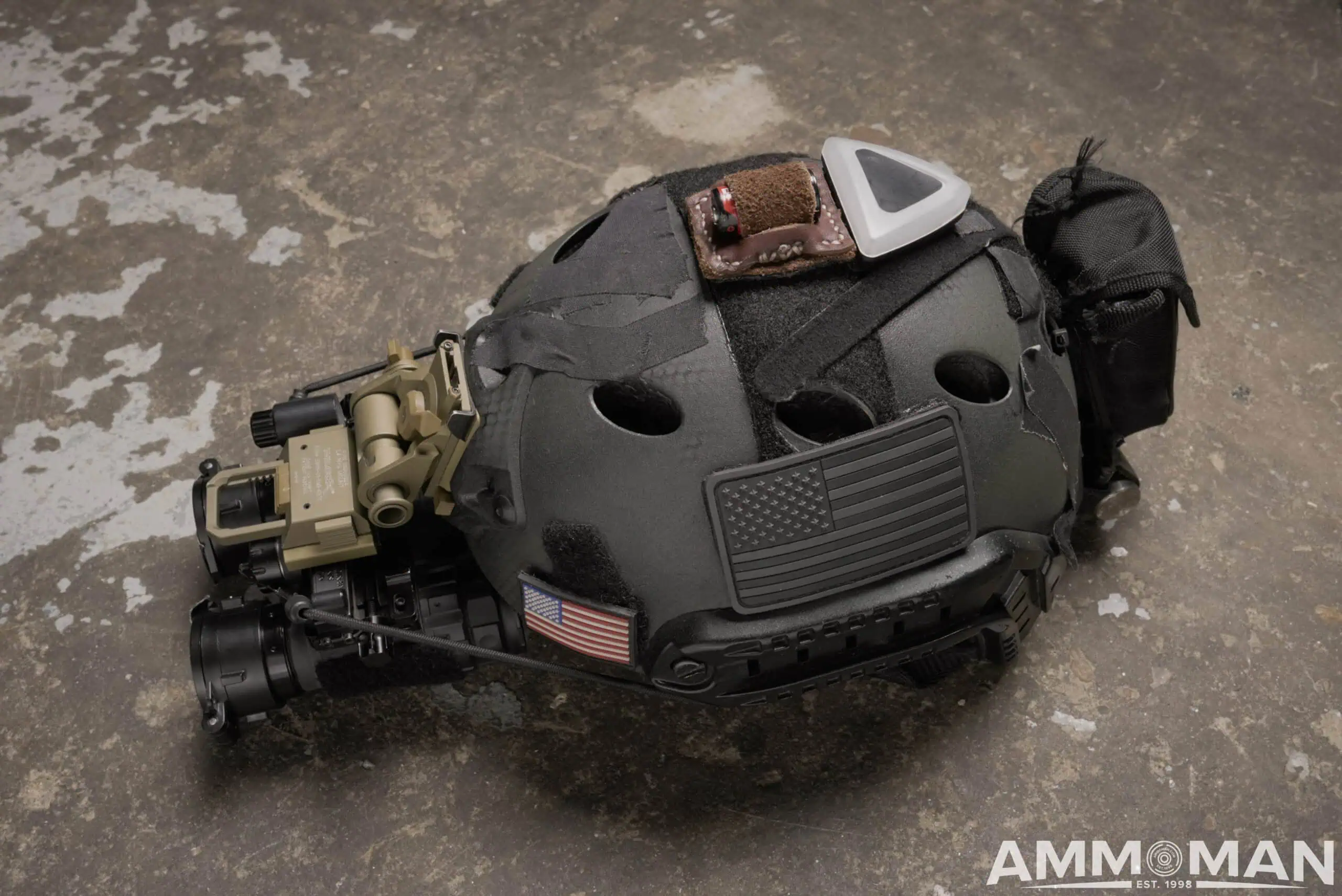
Bump helmet set up with AB Mod-3 night vision binoculars
Unless you plan on wearing the night vision around your neck and finding the hogs using a flashlight, you will need some way to mount the night vision to your head. The most common way is to purchase a helmet and mount in order to attach the night vision unit directly to the front. This way you can keep your hands free to hold and shoot your gun, while still wearing and using your night vision to the fullest.
Bump Helmets vs. Ballistic Helmets
The two main categories for helmets are bump helmets, or ballistic helmets. A bump helmet will offer no rated protection higher than a regular safety helmet, but they have the same purpose built design and profile as their ballistic rated counterparts. Bump helmets are significantly cheaper as well, and for hunting hogs they are a perfect fit. The ballistic helmets are the superior option for someone looking to train inside a shoot-house or for someone who needs protection from fragmentation.
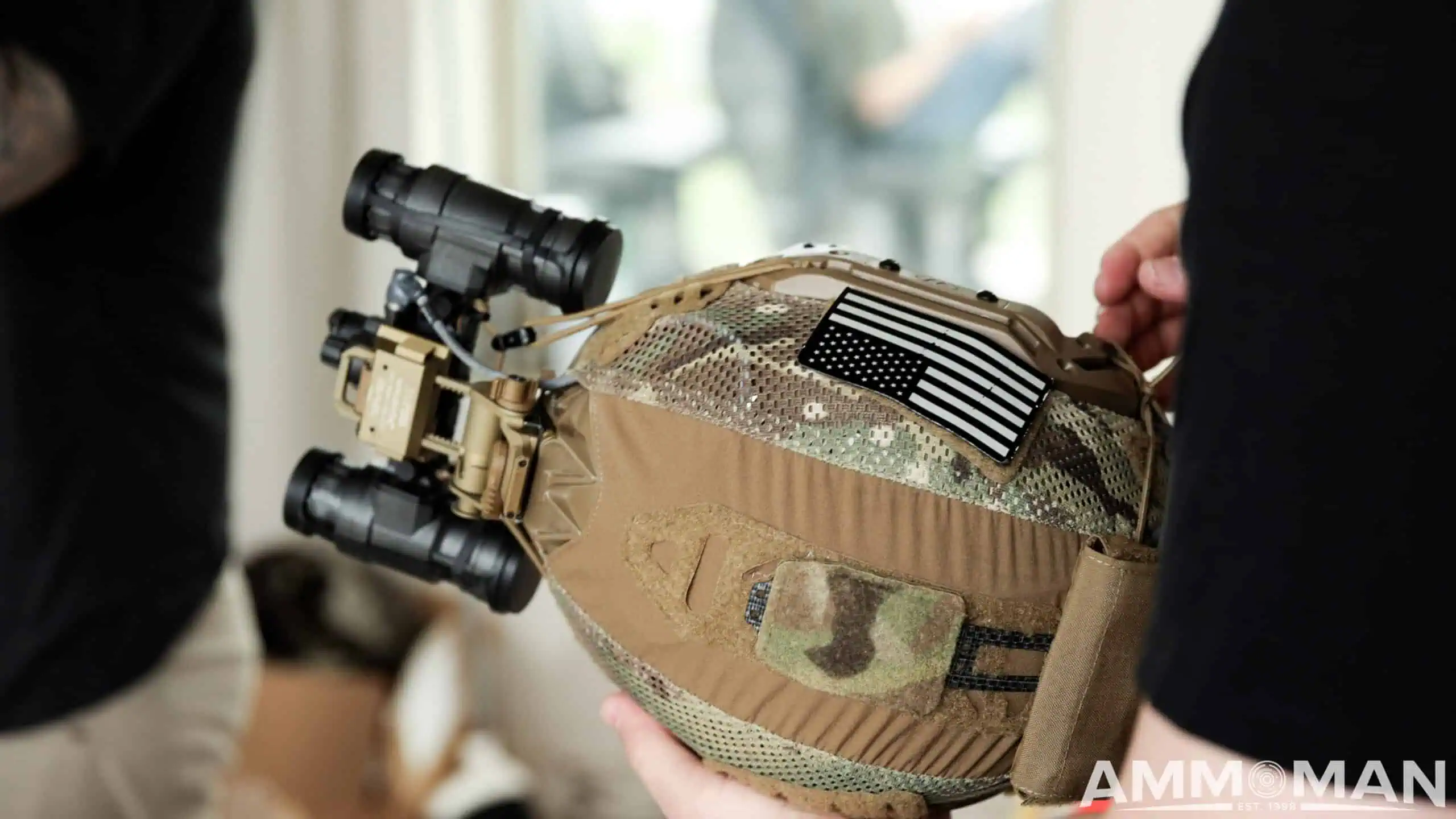
Bump helmet with PVS-31’s
Alternate Options for Wearing Night Vision
There are other systems aside from helmets if that isn’t what you’re looking for. The Ops-Core Skull Crusher system is neither a bump or ballistic helmet. It is a lightweight mounting system, constructed from a hybrid nylon, mesh and composite.
One other option is to get a imitation helmet that is most similar to a bump helmet. Some may try to dissuade you from getting an airsoft helmet for mounting multiple thousands of dollars worth of night vision equipment on. All I can say is that I have been using an airsoft bump helmet that I was able to find online for $50. It has worked very well for hunting hogs and training on the range for just under a year so far. If you decide to go that route, it would serve you well to test a few things first:
- Make sure the helmet has a reliable shroud, that fits your night vision mount
- Ensure you have a proper fitment from your mount to your night vision
- Tie off your gear with emergency lanyards in case anything fails
If you test all of these things beforehand, there is no reason you cannot start to explore and train with night vision earlier on than if you had to spend a large sum upfront on the most expensive equipment available.
Mounts

The Wilcox G24 mount is an industry standard. Known for it’s durability and numerous features.
As with most of this gear, there are also many options for the night vision receiving mount. However, there are few mounts that are considered worthy. First, you will need to know whether you are looking for a mount for a monocular device or dual tubes. Since I have more experience with dual tubes, I would recommend looking at either the Wilcox G24, or the Argus A4.
Weapon Systems and Accessories
Rifle and Caliber Choice
Rifle caliber is always a big debate when deciding on a weapon system. 5.56 ammo is more than capable for a hog hunt but you will have to be patient and have excellent shot placement to drop a large hog. If you correctly set up your equipment there is no reason an intermediate caliber will not effectively kill hogs.
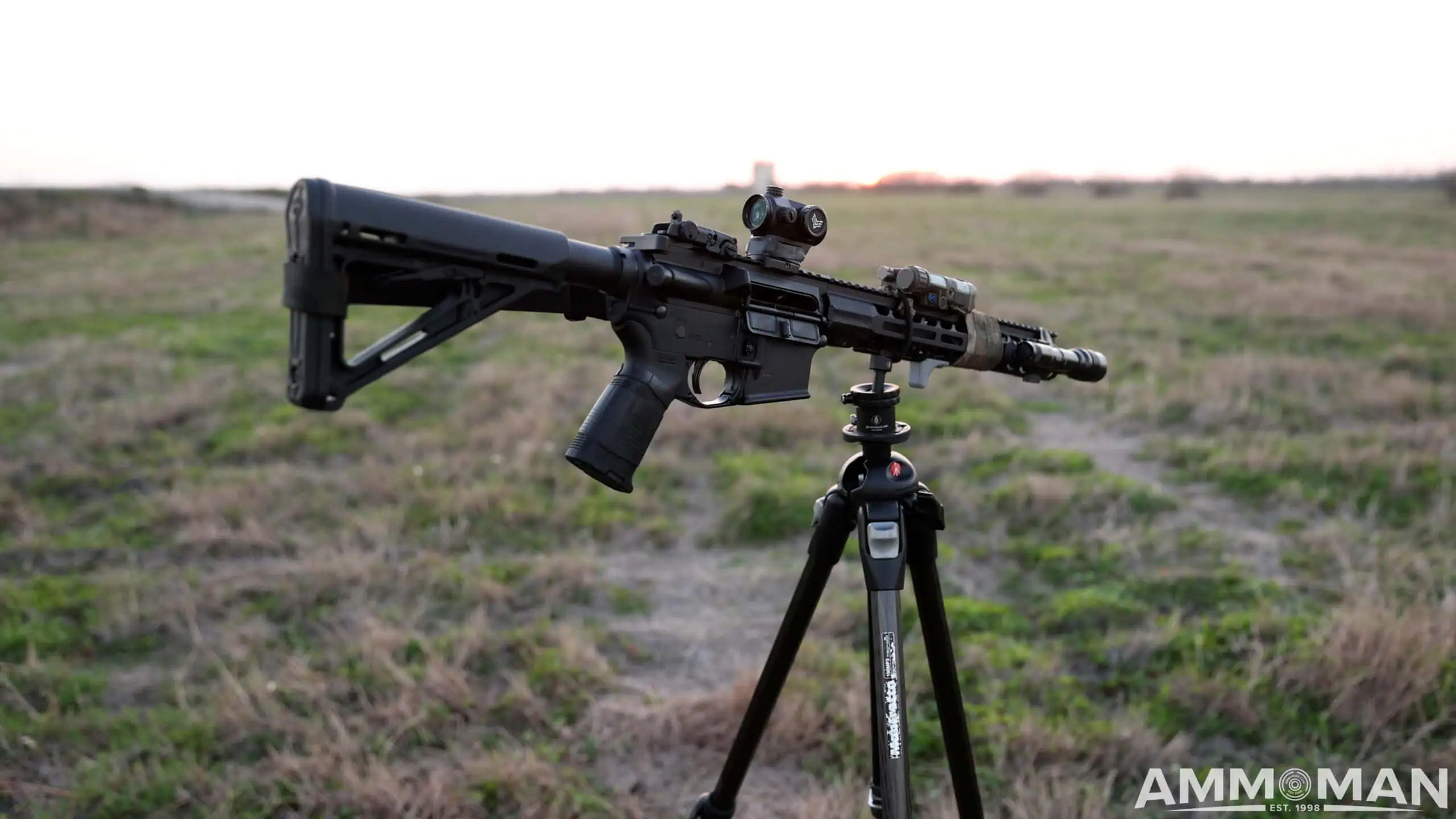
An AR-15 is more than adequate for hunting hogs
There are more popular calibers that are highly recommendable. The 300 blackout, 6mm ARC, 7.62×39 and .308 are all highly capable. There is obviously a large energy increase from a .223 to any of these calibers, which can translate to a higher hit-to-kill ratio. For more detailed information about setting up a rifle for hunting hogs, be sure to check out our article on an AR-15 setup for hunting hogs.
Infrared Lights and Lasers
Although it is possible to use “passive” aiming without a laser or illuminator with night vision, it is not the preferred method for aiming. Both identifying hogs and being able to get close enough to engage them shrinks dramatically without the implementation of a weapon mounted IR laser and light. The laser allows for a much more “heads up” posture, allowing the user to comfortably shoot without losing sight of the animal within a red dot.
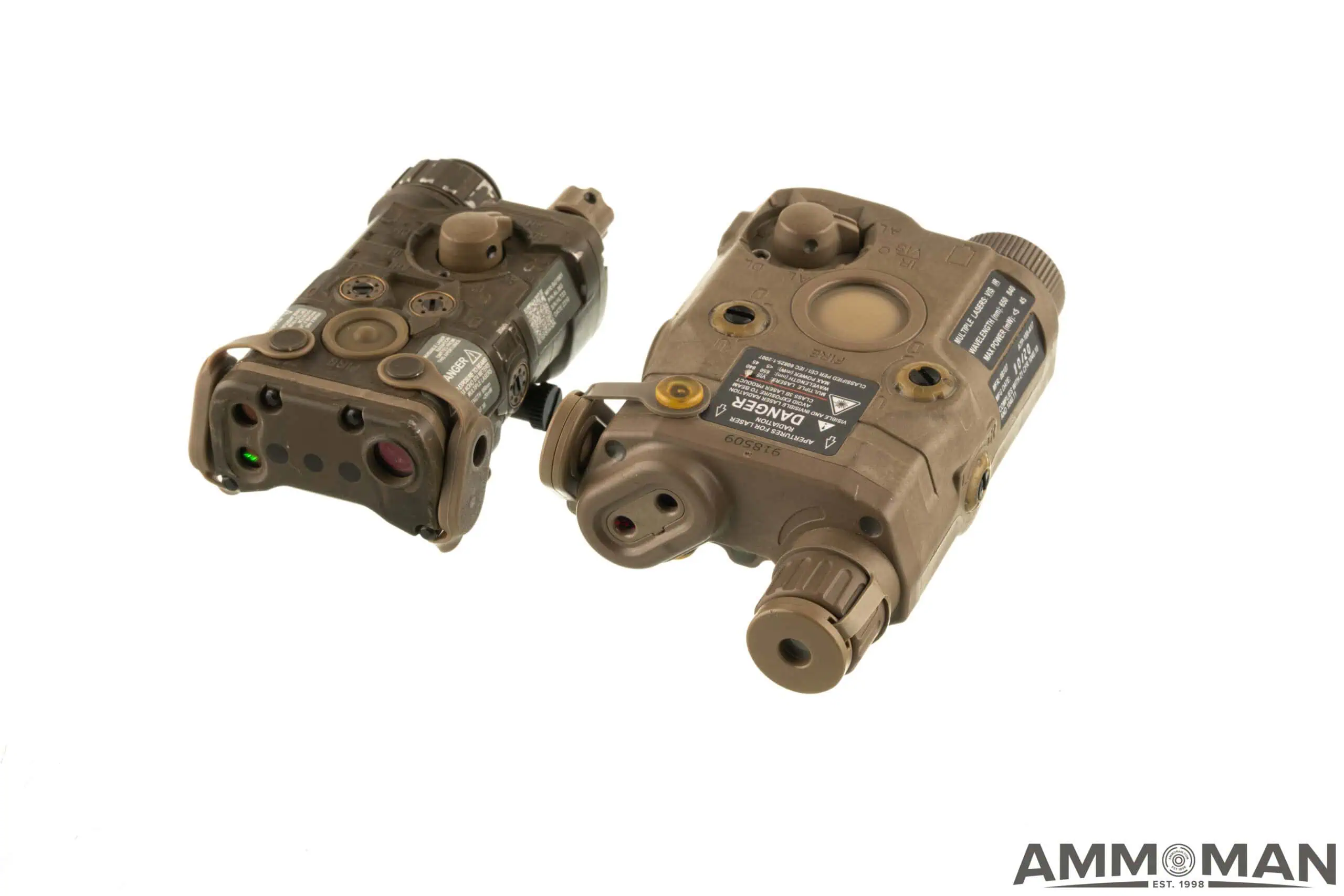
SomoGear NGAL (Left) L3 Peq-15 Full Power (Right)
Pressure switches are an optional device to enhance a shooters capabilities. Depending on the shooter (size of hands/ability) a pressure switch can be very useful. Different types allow a shooter to pick a combination they prefer. You can use a dual switch or a single switch. This will only matter if you have a flashlight that can receive a pressure pad cable.
Suppressors

The Silencer Co. Sythe Ti is a fantastic lightweight option for high caliber/low volume shooting suppressor.
Having a suppressor is extremely valuable for hog hunting. Especially at night. Keeping a low sound signature during engagements gives your team the ability to not disturb the surrounding areas. We have engaged groups of hogs and there would clearly be groups of hogs a mile away that would not be disturbed (depending on weather conditions). This creates more opportunities to engage new groups of hogs.
Other Helpful Items
Thermal Devices
Handheld thermal is probably one of the most key pieces of gear while hunting hogs at night. Night vision is excellent for engagement but not good at target detection. Utilizing the handheld thermal allows the team to ID from much further distances, define a route and then switch to night vision once in range of their equipment.

Having a hand held thermal device greatly increases your effectiveness when hunting at night.
If you are using night vision, keeping a handheld thermal nearby will help with searching out your target. Thermal technology will drastically improve your chances of both, finding hogs at greater distances and also properly identifying hogs from cows or other life stock that are not the intended targets.

Hunting Hogs with Night Vision
Agricultural Considerations of Hunting with Night Vision
Ranchers and farmers may find hunting at night to be a less obtrusive method, as opposed to during regular working hours. Not all landowners have the ability to go out and clear hogs off of their property during the day. Using night vision is something they can implement themselves, when they are done with their workday. It is also much easier to find hogs at night, making the time spent more profitable if the goal is conservation of their land and agricultural investments.
Hunting guides would say it’s simply another portion of their business, property management or other.
Characteristics of Feral Hogs
Did you know hogs don’t sweat? In most of the states where hog hunting is prevalent, it is a warmer climate. The higher temperatures associated with these western areas, force the hogs to look for watering holes or mud “wallering holes” during the day. These areas tend to be in thick cover and nearly impossible to move into undetected.
When it’s cooler in the late evening and night, hogs tend to forage or travel due to the cooler temperatures. They will break cover to root through a seeded field or scavenge a road side for food. This increases the amount of hogs you can see and hunt during the cover of darkness.
Hunting at night allows you to to maneuver under darkness, with much less chance of detection. Hogs have horrible vision but their sense of smell is quite good. While the hogs move through the thick brush, the hunter can maneuver to a correct wind before being seen by the animals.


